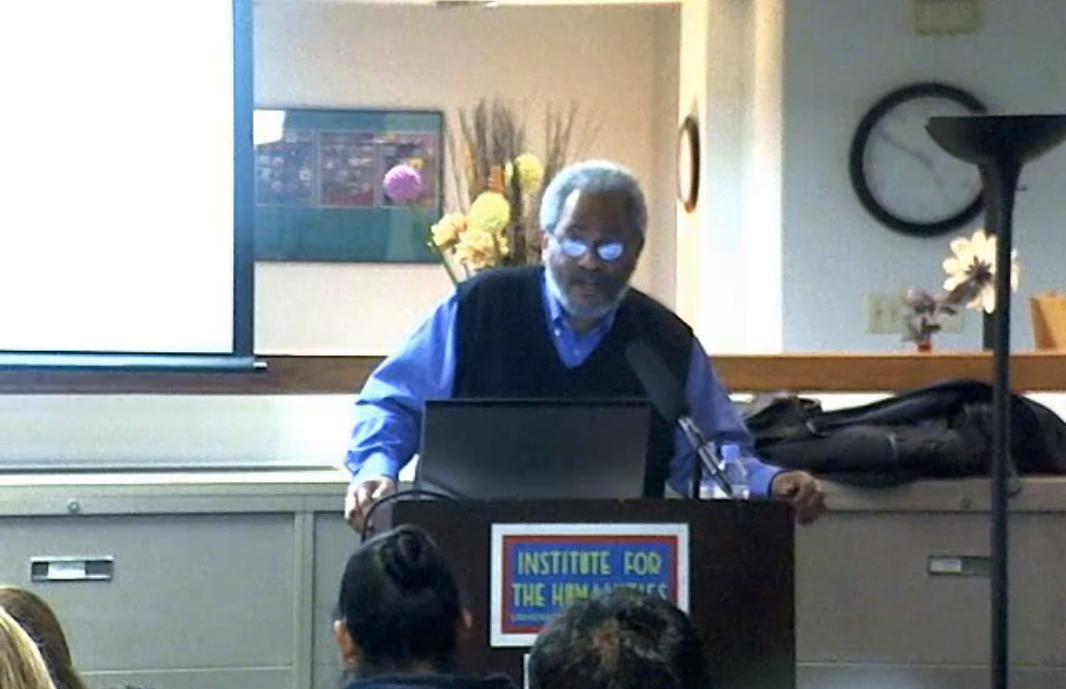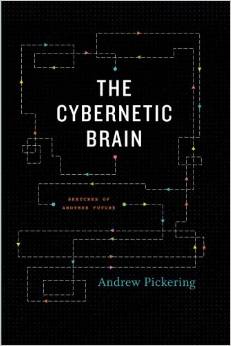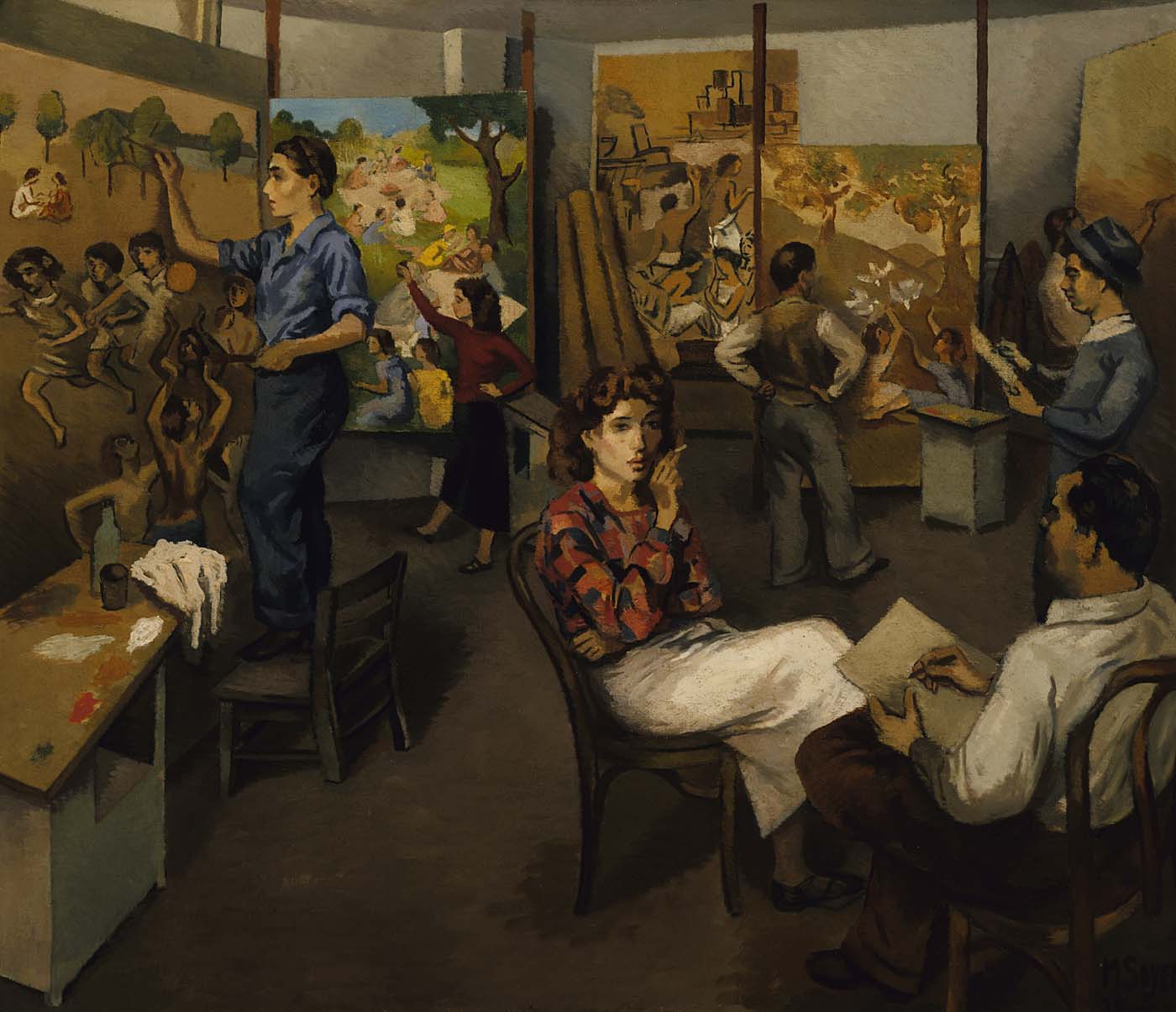Edited by Petra Dierkes-Thrun
Introduction (by Adeline Koh)
~
Singapore, a tiny Southeast Asian nation-state, is well known for its impressive economic growth since its independence in 1965. Filled with towering skyscrapers, an impressive, well-maintained public transport system and an unemployment rate the envy of most industrialized nations, the small country is often referenced as a model postcolonial state.
Despite these impressive economic strides, many of the racial tensions that have their roots in Singapore’s colonial history continue to manifest today, especially in relation to gender. Formerly a British colony, Singapore boasts a multi-racial, multi-ethnic population, most of which are classified into four major groups by the state: Chinese, Malay, Indian and ‘Other’. Unlike Singapore’s neighboring countries Malaysia and Indonesia, Singapore’s ethnic Chinese population is the majority ethnic group. These four categories are also constantly being challenged and nuanced by the high level of foreigners who are employed and study in Singapore. Constructions of ethnicities are highly inflected by gender roles in the four major ethnic groups and nuanced by the constant influx of migrants in the country, which include mainland Chinese ‘study mamas’ (mothers accompanying their young children to study in Singapore), female domestic workers from the Philippines and Indonesia, and male construction workers from China, India and Bangladesh.
Singapore’s ethnic Chinese population enjoys the most economic wealth and social status in this small country, which manifests itself in political and material privilege. Despite the fact that there are four officially sanctioned state languages (English, Mandarin Chinese, Malay and Tamil), television screens on public transport often broadcast shows only in English or Mandarin; increasingly, customer service representatives will be fluent in Mandarin but not the other two official languages; there are multiple reports of taxi drivers refusing to answer calls in areas where there are often more minority people. National beauty pageants also tend to celebrate a Chinese ideal of feminine beauty, as opposed to other ethnicities, so that it becomes exceedingly rare for a minority to win these competitions.
Scholarly work on race and ethnicity in Singapore seldom discusses this inflection of racial privilege with gender, an extremely important intersection that nuances the structure of minority identity in the country. In this interview, I speak with Sangeetha Thanapal, an Indian Singaporean woman who first introduced the controversial concept of ‘Chinese privilege’ in Singapore. Thanapal holds that structural ethnic Singaporean Chinese’s racial privilege is in some ways analogous to White privilege in Europe, the United States, Australia and New Zealand, despite the important differences in the historical, social, political, and geographic circumstances and developments of these two privileges. Thanapal’s provocative work and the virulent responses it engendered (mainly by Singaporean Chinese), inspired me to write a Medium essay titled ‘To My Dear Fellow Singapore Chinese: Shut Up When A Minority Is Talking About Race’ (which has since garnered over 105,000 page views and 56 recommends). We are now collaborating on a Medium Collection on Chinese Privilege, which seeks to bring to light the stories of minority voices in Singapore.
Chinese privilege in Singapore is unique because it occurs outside of mainland China and territories which it has historically controlled. In this manner, our interview is intended as the beginning of an examination of a larger Chinese privilege, with its own histories of colonialism and migratory communities. We note that in order to zero in on the current racial and political structures in Singapore, as well as specifically on the complex role of gender, our interview does not focus on the historical development of this privilege per se, or on the obviously important, historically motivated distinctions between different groups of Chinese in Singapore. In the nineteenth century, under British colonialism, southern Chinese immigrated from China to Singapore and Malaysia to escape famine and the effects of the Opium Wars back home, and arrived to a colony in which they were brutally subjugated: the majority of male Chinese immigrants experienced great abuse under a system of indentured labor (the “coolie” system), and many of the (comparatively few) female immigrants were forced into prostitution. While this interview is intended to open up a conversation about monolithic Singaporean Chinese privilege today, we plan a more comprehensive critical historical genealogy of comparative Chinese privilege in our future work in order to elaborate upon these distinctions and developments.
Furthermore, future work should pursue two additional important lines of inquiry: first, a clear conceptual delineation between Chinese-speaking and English-speaking Singaporeans and the different sorts of privileges which they encounter; and second, a comparison between the historical forces driving the subalternity of the indigenous Malays, and that of the diasporic Indian population. Like the Chinese, many contemporary Indian Singaporeans arrived in the colony as indentured labor, as well as convicts, traders and as sepoys under the British military. Which historical and material conditions allowed the Chinese to appropriate the forms of privilege they enjoy in Singapore today, while Indians could not join or rival them in this privilege in their own Singaporean experience? Further, we want to investigate the sorts of cultural imaginaries that are used in the creation of Singaporean Chinese privilege and its connection with reinventions of mainland Chinese chauvinism (such as in the Chinese term for China, Zhong Guo, meaning Middle Kingdom, center of the world between heaven and hell). We also want to continue building on this concept of Chinese privilege through a simultaneous examination of Tamil-Hindu internal prejudices of the Indian community in Singapore, as well as its relationship with the Malay community.
In many respects, then, this interview is simply a first step towards a larger, sorely needed conversation about race, gender, and privilege in Singapore. We hope it will inspire others to build on our suggested research trajectories and also develop new ones of their own.
*******
Adeline Koh: Sangeetha, thanks so much for speaking with me today. To begin with, could you tell me about your experience being an Indian Singaporean?
Sangeetha Thanapal: To be Indian Singaporean is to carry a number of identities, not all of whom work in concert with each other. We are expected to keep in touch with our root culture, language and traditions, but never to engage in any kind of ethnic chauvinism. We are expected to be bilingual cosmopolitan citizens of the world, while constantly being grounded in Indian culture. Those who manage to do this effectively are invariably performing a form of code switching between their traditional Indian language-speaking identities and their English-speaking, modern ones. We are told we have to be firmly established in our cultures, but people who follow this advice are seen as provincial. To speak your mother tongue well is to invite questions about how long ago you immigrated from India. It is this tension that we have to constantly negotiate, and many of us cannot or refuse to do so. To be Indian is to have my ethnicity matter in all things, but to be Singaporean is not have it matter at all, supposedly. It is ironic and–given the inability of the state to adequately marry these two binaries–unsurprising that race and ethnicity are difficult concepts to examine and contend with in Singapore.
AK: Could you elaborate on this?
ST: The racialism paradox in Singapore makes race front and center of your identity, while at the same time denying that race has anything to do with the obvious differences in people’s treatment. One example is the Singaporean Identity Card, which states your ethnicity.1 This identity card is akin to a Social Security number in the United States (used to apply for housing, bank loans, even something as simple as a phone number), and hence including this information makes someone’s racial identity a dominant factor. It is not hard to imagine the many ways in which this can disadvantage minorities. Even job applications ask for your ethnicity, a practice that is illegal in many countries. Educational achievements are viewed through the lens of race, not gender or class.2 Why does the state constantly racialize us and pit us against one another? This also obfuscates the intertwinement of race and class. For instance, the state says that Malays are underperforming3 in academics, leaving out their constant marginalization leading to such class factors. The Singaporean pledge literally says, ‘regardless of race, language or religion,’ implying that meritocracy trumps race in this alleged land of opportunity. Supposedly, hard work comes with the same opportunities for all. The government has a governance principle: ‘Work for reward, Reward for work.’4 Meritocracy is a neoliberal lie that tends to ignore the systemic inequalities that have strong material effects on people’s ability to live and work in Singapore. It places the blame for failure on those who did not work hard enough or take full advantage of the choices they had, conveniently forgetting that some people did not have a diverse range of choices to begin with.
AK: It almost seems as though minority Singaporeans have to adopt what W.E.B. Dubois called a ‘double consciousness’–always having to think in terms of the language and social of the dominant group while maintaining their own cultural space. What do you think?
ST: When Dubois speaks of double consciousness, he is referring to people of colour’s, specifically Black people’s, constant negotiation of conflicting racial identities, often a result of racial oppression. In The Souls of Black Folk, he writes that Black people feel ‘’twoness . . . two souls, two thoughts, two unreconciled strivings, two warring ideals in one dark body…’5 It is the struggle between our view of ourselves, versus the dominant racial narrative. Dubois was speaking to people sharing an African history and heritage, of course, and in that context, he also addressed White supremacy and its implication in such double consciousness. In Singapore, Chinese supremacy and institutionalized racism against minorities have resulted in a similar double consciousness. We constantly think about and cater to Chinese people, as they have institutionalized power. In Singapore, the government regularly emphasizes the need for the different ethnic groups to stay in touch with their cultures and traditions, so it is not just Chinese supremacy itself that’s responsible. Personally, I think they don’t actually object to Indians and Malays giving up their cultures; on the contrary: they would probably love it if many of us gave up our cultures to assimilate through marriage or learning Mandarin, for example. The government finds Malay culture a hindrance to its economic growth and would like spread more ‘Chinese’ attitudes of hard work and personal drive. I think the government also wants Chinese people to be steeped in their traditions and are afraid of encroaching westernization. It only cares about keeping minorities’ traditions as long as they are a marketable tourism commodity, but not because they are valuable on their own. The government needs to keep up its multi-racial facade for tourists, who feel like coming to Singapore means that they can access authentic Chinese, Malay and Indian culture, all in the same place.
AK: Interesting. Dubois talks about ‘twoness’ in relation to race. How would this be further refined in relation to gender? Can you describe the difference between being an Indian Singaporean man and a woman?
ST: Being an Indian Singaporean woman is to be at the very bottom of the totem pole. Patriarchy and ensuing male privilege means that while Indian men are discriminated against for being Indian, they are also treated better than Indian women, both by the majority Chinese community and within the Singaporean Indian community. Indian women are still fairly restricted in their movements and their lives, expected to be both the modern worker and the traditional housewife. Indian men retain their patriarchal freedom. In Singapore, the hierarchy of race puts the Chinese at the top, Malays in the middle, and Indians at the bottom. Some have argued that Indians have it better than Malays in Singapore, which I think is a valid argument, depending on context. Indians are generally better off than the Malay community in terms of education and economic status, and one might even say that their minority class privilege intersects with the majority Chinese’s.6 In 2010, the average household income for Indians was almost twice as high as in Malay households.7 There is, however, a lot more research regarding Malay marginalization.8 Because of the diasporic Tamil Hindu immigrants’ relatively high socio-economic standing, many people do not think there is discrimination against our ethnic group. What is important is that instead of seeking to compete for attention for our oppression, we study the Chinese dominated state’s specific ways of enacting it against both communities, and validate differing experiences while encouraging a new solidarity.
As mentioned above, women of different races are treated differently. This kind of colourism and inter-POC (people of colour) policing of skin colour is not new or unique to Singapore, of course. A lot of it is internalized White supremacy: the lighter you are, the higher on the hierarchy you stand. Colourism is a serious problem within the Indian community itself, and, to a lesser extent, within the Malay community as well. White supremacy and Chinese supremacy function in combination here. Darker-skinned Indian and Malay women are constantly bombarded with messages that their skin colour makes them unattractive. Our body shapes, which are naturally curvier, are compared to skinnier, fairer Chinese women’s, and found inadequate. In such body policing, race and gender again intersect and amplify each other. The communities themselves are responsible here, but so are the state and the media. In the 2013 Singapore Miss Universe, there were no Indian or Malay women in the top twenty. Since 1966, which is when Singapore started being represented at the Miss Universe pageant, Malay or Indian women have won the title at home a grand total of four times.9 In 2014, for only the second time ever, an Indian woman won Miss Singapore Universe. She was inundated with disparaging comments on her face and skin colour online.10
Discrimination against Indian men is mitigated by their gender. Not so women’s: whatever racial discrimination they undergo, it is made yet worse by being female. William Keng Mun Lee of the University of Lingnan argues that in Singapore, women in general are in lower-paying jobs across both core and periphery. This observation, despite the small differences in the educational standards of males and females in Singapore, leads him to theorize that this is due to structural factors such as sexism and discrimination. Interestingly, however, he says that it is also due to ‘Chinese male workers success in protecting their economic success by excluding females from high-paying jobs.’11 Chinese males, not Singaporean men in general, hold wealth and power in the core industries in Singapore. So if Chinese females are being excluded for being women, how much worse is the situation for Indian and Malay women?
AK: Let’s talk a little bit about the concept you’ve developed, ‘Chinese privilege.’ It’s a terrific concept that can be easily used to explain social inequity in Singapore. How did you come up with the concept of Chinese privilege?
ST: I remember the exact moment. I was reading bell hooks’ ‘Beloved Community: A World Without Racism.’ I deeply sympathized with what she was saying, even though she was speaking about a different context. I performed a simple experiment. I took a paragraph I particularly loved and I substituted the words ‘Chinese’ for ‘White.’ I read it back to myself, and the moment of realization that that paragraph could have been written about Singapore, and not the U.S., was what made me realize that racial privilege is not simply a White phenomenon. I don’t mean that I never realized it before, only that I had lacked the language to express it in a way that wholly encompassed the experience not as singular, but as universal to minorities here. In Killing Rage: Ending Racism, hooks speaks of ‘supremacist attitudes that permeate every aspect of […] culture’ while ‘most white folks unconsciously absorbing the ideology of white supremacy […] do not realize this socialisation is taking place [… and] feel they are not racist.’12
Now, I am not going to make the claim that hooks’s ideas are wholly transferable to the Singaporean context. That would be an undue appropriation of the African American experience and erase the specificity of their oppression. But there are enough similarities for me to associate the two phenomena in my mind: the daily microaggressions that minorities experience, employment discrimination, the paradoxical, simultaneous derision and appropriation of their culture.
While I realize that the concept of White privilege has its own context and history, it really helped me understand the situation in Singapore by analogy. Chinese Supremacist attitudes permeate our society. The PAP believes in keeping the Chinese and their Confucian ethic at the helm, supposedly for our economic growth and success. So-called Special Assistance Plan schools, where all taxpayers’ money pays for Chinese students’ opportunities only, with the argument that this practice enables better trade with China in the future.13 The media constantly laud China as the world’s next superpower, even though economists predict its one-child policy will cause it to fall behind an ever-burgeoning Indian state. And the state continues to make racist comments such as the following: ‘We could not have held the society together if we had not made adjustments to the system that gives the Malays, although they are not as hardworking and capable as the other races, a fair share of the cake.’14 Religion, specifically Islam, is not spared from racist attacks: ‘In those days, you didn’t have a school tuckshop, so you bought two cents of nasi lemak and you ate it. And there was a kway teow man and so on. But now, you go to schools with Malay and Chinese, there’s a halal and non-halal segment and so too, the universities. And they tend to sit separately, not to be contaminated. All that becomes a social divide. Now I’m not saying right or wrong, I’m saying that’s the demands of the religion but the consequences are a veil across and I think it was designed to be so. Islam is exclusive.’15
Chinese people do not see such comments as racist. Most people see it as normal–common wisdom. If minorities ever raise their voices, they are told to shut up and sit down.
I started doing a similar analogy exercise with other texts after my experience with bell hooks. In Privilege, Power and Difference, Allan G. Johnson says:
Being able to command the attention of lower-status individuals without having to give it in return is a key aspect of privilege. African Americans for example, have to pay close attention to whites and white culture and get to know them well enough to avoid displeasing them, since whites control jobs, schools, government, the police, and most other resources and sources of power. White privilege gives little reason to pay attention to African Americans or how White privilege affects them.16
If you pay attention to minorities in Singapore, the analogy rings so true. We know about Chinese culture, some of us learn Mandarin to make ourselves more employable, we try to understand how the Chinese work, we give in to them when they speak Mandarin around us, never asking them to be sensitive towards us. We know that knowledge of them will help us; they, on the other hand, know very little about our cultures, religions or languages. They do not have to: not knowing it does not affect them in a material way. Reading about the African American experience triggered these important insights about our own situation for me.
AK: Could you say a little more about how you define Chinese privilege? Does Chinese privilege take place around the world, or is it specific to Singapore?
ST: I define Chinese privilege similarly as White privilege, again by analogy rather than wholesale transference of one distinct historical context to another. White privilege is invisible and normal to those who have it, which makes it hard to discuss because people rarely see how they are being privileged. It goes beyond advantages people enjoy because of their race. It is also the unearned power the system confers by virtue of your race alone. It is a set of institutional benefits, with greater access to power and resources and opportunity, that are closed off to those who do not have it. In the same vein, these advantages are bestowed upon Chinese Singaporeans, regardless of any other intersectional identity they carry. By virtue of being Chinese in Singapore, they start life on a higher place in the scale as compared to minorities. They are the beneficiaries of a system of racial superiority, which is why when I talk about the country I call it a Chinese Supremacist state.
Many see Chinese privilege in Singapore as the root cause of Singapore’s economic strength. Lee Kuan Yew is the only man to have ever held three political titles in the government. That alone should signal his significance. He was Singapore’s first Prime Minister, and as such, the chief architect behind modern Singapore. He later became Senior Minister, a title he held until his predecessor Goh Chock Tong ascended to the position. In an attempt to continue keeping him in power, he was then given the title of Minister Mentor in 2004. He has been in power since 1959, and only stepped down in 1990, making him the world’s second longest serving head of state, after Fidel Castro. He is the man who has most impacted Singapore with his policies and his words still continue to hold enormous power and clout. In 1989, he commented that Chinese immigration from Hong Kong to Singapore was necessary, given the low birth rates amongst Chinese Singaporeans: without the Chinese ‘there will be a shift in the economy, both the economic performance and the political backdrop which makes that economic performance possible.’17 Chinese privilege means that problems within the Chinese community are framed as national crises, while problems within minority communities are blamed on culture or genetics, and left to the communities themselves to handle.
Chinese privilege in Singapore falls into a unique category with Taiwan (and China, of course). Chinese privilege cannot exist in the U.S. or in Europe because Chinese lack institutionalized economic, social and political power in those places. In Singapore, Chinese Singaporeans have power in every facet of life; it is systemic and systematic.
AK: For me as a Chinese Singaporean, your analysis makes a lot of sense. How does this racial concept of privilege intertwine with other intersectional oppressions, such as gender?
ST: In 2012, a survey found that women hold just 6.9 per cent of directorships. Moreover, the joint study with advocacy group BoardAgender, found 61.3 per cent of the more than 730 companies listed on the Singapore exchange do not have a single female member on their boards.’18 The survey does not break it down further by race, making the assumption that all women in Singapore are discriminated against only on the basis of their gender, not their race. Singapore has the same gender representation as other places that tend to erase race in favor of gender. In the West, White women often stand in for ‘all women,’ even though they actually earn more than Black and Latino men in the US,19 just as Chinese women are seen as representatives of all women in Singapore, including minorities.
Recently, an article cited a survey of Singaporean women’s under-representation on company boards. ‘Companies with more diversity in boardrooms are more profitable, but Singapore doesn’t fare so well – 56.5% of the companies surveyed had all-male board members.’20 It was a matter of much discussion. The article itself concluded that ‘we recommend empowering board nominating committees to cast their net wider and pro-actively look for women candidates.’ However, the article also mentions that ‘59% of the boards were of single ethnicity.’ No discussions, no conversations online or in the mainstream media ensued about this, and the article does not even seem to pick up on the potential impact for minorities, let alone minority women. If women’s rights groups such as AWARE (Association of Women for Action and Research) are solely focussed on gender representation, not gender in conjunction with racial imbalance, do we need to wonder why minorities on company boards are so few in number? Who are the women actually being represented here? Clearly, Chinese women are the default here. Given the intersection of gender and race, Indian and Malay women are at a double disadvantage. But that conversation does not happen.
Feminism in Singapore is about making Chinese women equal to Chinese men, not about equality for all women. Dismantling the Chinese patriarchal structure itself would mean that Chinese women would have to give up their racial power and privilege, too, and they do not want to do that. Chinese women need to realise that they actually have better opportunities than many minority men here. As minority women, we are far more attuned to racism and sexism than Chinese women are, because we fight both those intersections every day, and we see how we are treated not as women, but specifically as Malay or Indian women.
In the recent Singapore Literature Prize awards, all the winners were male, and a furor about women’s exclusion from these prestigious awards broke out.21 Again, however, there is no furor over the fact that no minority person has even won the English prize for fiction. The closest call was the playwright Haresh Sharma in 1993 and the poet Alfian Sa’at, who was awarded a commendation prize in 1998 (both before the prize was categorized into languages). This year, there was not even one minority on the English short list, either for fiction or non-fiction. Chinese writers are fully represented both in the Chinese and English categories. This is what Chinese privilege looks like in everyday life. There was only one, just one, minority woman, in the entire shortlist across all three categories under the English poetry category.22 Of course, she did not win.
Chinese women clearly realize the gender disparity in Singapore. But since they see themselves as the only women worth talking about in Singapore, they do not focus on the effects of racial discrimination against other women in Singapore.
AK: I have seen exactly what you mean–Chinese feminists who remain silent when their minority sisters and brothers are being discriminated against. It makes me so mad. For those who are new to the concept, can you please elaborate a little bit more on the effects of Chinese privilege, and give some concrete examples about how Chinese privilege affects minorities in Singapore?
ST: Privilege and oppression are two sides of the same coin. If one exists, the other does, too. Chinese privilege means that Singaporean minorities are oppressed. Within minority groups themselves, there are subtle differences. Light-skinned North Indians are treated marginally better than darker-skinned South Indians. The term ‘shit-skin’ is often a slur the Chinese use to describe us. This further intersects with class, as class privilege often mediates racial oppression. Higher-class Indians are treated better, and are often co-opted into Chinese supremacy, or they assimilate themselves by choice by marrying Chinese partners, etc. Those the government co-opts become exemplary tokens of our so called multi-culturalism — but they might as well be Chinese. S Dhanabalan, once almost tapped to be the next Prime Minister of Singapore, is of Indian Tamil descent and was a prominent minority in the government.23 He was supposed to represent the Tamil-Indian population in Singapore. He has a Chinese wife and is Christian, while most Indians in Singapore are Hindus. There is such a lack of proper representation of minorities in Parliament. K Shanmugam, another Minister, was instrumental in the state policing of religious Hindu expressions, such as Thaipusam,24 where he spoke on behalf of the government, all the while claiming to represent Indian Singaporeans. Elite Indians buy into the state rhetoric and enforce it against their own people. The complicity with the Chinese majority interest by those who could have done something for the community ensures farcical representation only, designed to only allow us a voice compatible with the government line.
AK: The issue of interracial marriage is an interesting one. How do you understand Chinese privilege in relation to marriage and relationships?
ST: In recent years, the number of interracial marriages in Singapore have risen. This is to be expected–after all, we are a multiracial country with a multitude of races and cultures. In 2012, one in five marriages was interethnic.25 Singapore prides itself on being a postracial society, and within the Indian community, there has been indeed been a strong increase of Indian men dating and marrying Chinese women. And yet, the reverse is rarely true–Chinese men do not usually date or marry Indian women. It is also important to realize that the Indian men who marry Chinese women are by and large extremely well-educated members of the higher Indian-Singaporean socioeconomic classes. Chinese women are not marrying blue-collar Indian men, but rather those considered most eligible. Again, race and class issues are intertwined here. Fanon perhaps explains this phenomenon best in Black Skin, White Masks: for Black men, relationships with white women are often about the need for recognition and indirectly, the desire for assimilation.26 I believe this is true in the Singapore context. Indian men who date Chinese women are desperate to assimilate. They instinctively realize the privilege of being Chinese, and unable to access it any other way, aspire to marry a Chinese woman. They do not have to experience racism as much when their wives’ Chinese privilege protects them, and it gives them access to opportunities that are usually reserved for Chinese people. They are effectively deracializing themselves.
Heterosexual patriarchy is also at work here. Women are expected to marry up wherever possible. Indian women occupy the lowest rung of the Singaporean race hierarchy, and Chinese men occupy the highest. For a Chinese man to date and marry an Indian woman means to marry far beneath his status. Chinese women of a middling socio-economic class can move up a class by marrying the wealthiest indian men in the country. These Indian men, lacking racial privilege, which is itself a ‘property right’,27 can also move up the racial class through gaining access to their wives’ racial privilege. Chinese men gain nothing and lose everything by marrying an Indian girl, while Indian men gain access to racial privilege and Chinese women to class privilege by marrying rich Indian men. But what about Indian women? Singapore does not break down interracial marriages by gender, which obfuscates this racist situation, but the number of people needing to marry into Chineseness shows how powerless the minority communities really are. Indian women like me do not usually have access to the same opportunities Indian men have. Again, we observe the complex intertwinement of sexual, class, and race discrimination here, and the internal paradoxes and contradictions to official postracial, egalitarian Singaporean rhetoric are obvious.
AK: One interesting theme repeated here is that representation is either always Chinese or White. What do you think is the relationship of Chineseness to Whiteness in Singapore?
ST: Generally speaking, I think that Chinese Singaporeans do not seem to struggle with reconciling Whiteness and Chineseness. I believe this is the case because Chineseness is seen as equal, and in certain aspects even superior to Whiteness. Whiteness is liked, welcomed, and used as a stamp of approval, but the liberal political ‘Western values’ frequently clash with our ‘Asian values.’ Chinese people tend to see themselves as victims of White racism (while at the same time refusing to recognize their own racism regarding other minorities in Singapore, as I outlined above). White expatriates work well-paying jobs and live in the most expensive apartments in Singapore. They are treated very well everywhere they go in Singapore, because the ‘White is better’ mindset still exists here. Chineseness functions the same way in Singapore as Whiteness, sometimes even more so, since the Chinese are the true owners of power here while White people are long-time beneficiaries of that power.
As a person of colour living in a supposedly decolonized Singapore, I would say that what makes our struggles markedly different from minorities in the West is that we have to deal with Whiteness on top of Chinese supremacy. So we experience a double racial oppression. I often say minorities here have been colonised twice, once by the British, and once again by the Chinese. What other decolonised state has a completely alien population control political and economic power, while the formerly decolonized indigenous people remain continuously marginalized? The language of Critical Race Theory can only take us so far in Singapore. We need to start coining our own terminology and framework for talking about racism in Singapore. This conversation has just only begun.
AK: When you complicate this issue of privilege by bringing gender into the picture, how do things shift for women, regarding White privilege and Chinese privilege?
ST: Intersections always make things complicated, especially for people who carry multiple oppressed identities, and so these shifts are difficult to quantify. White women have more privilege than Chinese women. Chinese women have more privilege than Indian and Malay women. Even among Indian and Malay women, the comparative amount of privilege is hard to pin down. Indians in Singapore are by and large Tamil, the darkest Indians from the subcontinent. Malay women are generally fairer, a light brown compared to the dark brown of most Indian women here. Due to colourism, Malay women might thus have a tad more privilege. But at the same time, this can be negated by something simple as wearing the hijab. Singapore is suspicious of Malay Muslims, and Malay women who wear the hijab are seen as conservative and oppressed. Indian women, however, are not seen as religiously fanatical, even if they are in ethnic attire, as Hinduism is not seen as the same kind of threat as Islam.
AK: Can you talk about people who inhabit in-between racial spaces, for example people who might be of one ethnicity but can pass for another? How does racism affect them in Singapore?
ST: Passing is a mixed bag, and it is present across all intersectionally oppressed identities. To put it simply, passing is the ability to be able to ‘pass’ as your oppressors, even though you carry an identity and occupy a space as the ‘other.’ There are many people of mixed race in Singapore, especially a group of people in Singapore called ‘Chindians’, which is a term for people who are Indian and Chinese, and who can pass for Chinese and thus have access to Chinese privilege. People like ‘Chindians’ can effectively move between the worlds of oppressors and oppressed. It is really difficult for people who pass, because they are always fighting to have their entire identities validated.
AK: We are nearing the end of our conversation. What messages would you like to give to young minorities in Singapore?
ST: Audre Lorde said that our silence will not protect us. This is true no matter who we are. When you are silent, you are complicit. Inaction against oppression is collusion with oppression.
To young minorities in Singapore, I would say: you can start small. Call out Chinese people when they behave micro-aggressively. Call out our own people when we show stereotypical prejudices towards Malays, Indians and other minorities. Many Indians believe the Malays are better positioned because of their supposedly free education, even though that policy actually ended a long time ago. Malays believe the Indians are the preferred minority, because there are more high-profile and prominent Indians, and because Indians are compared favorably to Malays, to blame Malays for their alleged lack of progress. Indians are merely the token minority, there only because the state needs to have some public minorities to salvage its international reputation. Indians see Malays as having some sort of special advantage because the state protects their religion, and because they are indigenous to this part of the world. The Chinese supremacist state uses such highly problematic comparisons for its own ends. It wants to keep us from finding solidarity with each other. It wants us to be suspicious of each other. But divide- and-rule tactics only work when we buy the Chinese supremacist state’s lines of thinking and argument.
Zora Neale Hurston said that when you are silent, they will kill you and say you enjoyed it. Every time you remain silent, they believe they have the right to treat you this way, and worse than that, that you want to be treated this way. Again, to the Singaporean youth I would say, do not be afraid, and do not be silent. This country has gone through four generations since independence, and with each, it has become less willing to talk about its serious race problems. That needs to change. The conversation needs to happen. You cannot sit back and let a few of us take all the hits. Hit us long and hard enough, and without the support from our own communities, we will inevitably cower, too. It is unconscionable for you to let others fight your oppression, while you wait to reap the rewards of what may come. Realise that we can only do this together, or we cannot do it at all.
_____
Notes:
1. “National Registration Identity Card.” Wikipedia. Accessed Jan. 15, 2015. Back to the essay
2. Ministry of Education, Singapore: Press Releases – Performance by Ethnic Group in National Examinations 2002-2011.” Oct. 29, 2012. Accessed Feb. 22, 2015. http://www.moe.gov.sg/media/press/2012/10/performance-by-ethnic-group-in.php. Back to the essay
3. Zakir Hussain, “No Short Cut to Raising Malays’ Maths Grades,” in The Straits Times, Dec. 18, 2009. Accessed Feb. 22, 2015. http://news.asiaone.com/News/Education/Story/A1Story20091214-185790.html Back to the essay
4. Hsien Loong Lee, “Singapore’s Four Principles Of Governance.” Civil Service College, Nov. 1, 2004. Accessed Feb. 22, 2015. https://www.cscollege.gov.sg/knowledge/ethos/ethos november 2004/pages/singapore four principles of governance.aspx Back to the essay
5. W. E. B. DuBois, The Souls of Black Folk: Essays and Sketches (Charlottesville: University of Virginia Library, 1996), 9. Back to the essay
6. Education Statistics Digest.” Ministry of Education, Singapore, Jan. 1, 2013. Accessed Feb. 22, 2015. http://www.moe.gov.sg/education/education-statistics-digest/files/esd-2013.pdf Back to the essay
7. Demographics of Singapore.” Wikipedia. Accessed Jan. 14, 2015. Back to the essay
8. See L. Rahim, The Singapore Dilemma: The Political and Educational Marginality of the Malay Community (Oxford University Press, 2001) for an excellent discussion on oppression of the Malay community. Back to the essay
9. “Miss Singapore Universe.” Wikipedia. Accessed Jan. 16, 2015. Back to the essay
10. Surekha Yadav, “Is Singapore a Racist Country?” Malay Mail Online, Aug. 30, 2014. Accessed Feb. 22, 2015. http://www.themalaymailonline.com/opinion/surekha-a-yadav/article/is-singapore-a-racist-country Back to the essay
11. William Keng Mun Lee, “Gender Inequality And Discrimination In Singapore,” in Journal of Contemporary Asia 28, no. 4 (1998): 484-97. Back to the essay
12. bell hooks, Killing Rage: Ending Racism (New York: Henry Holt, 1995), 267. Back to the essay
13. “Special Assistance Plan.” Wikipedia. Accessed Jan. 15, 2015. Back to the essay
14. Tom Plate, “The Fox and the Hedgehog (Not a Disney Movie),” in Giants of Asia; Conversations with Lee Kuan Yew Citizen Singapore; How to Build a Nation. 2nd ed. (Singapore: Marshall Cavendish International [Asia] Ptd, 2013), 61. Back to the essay
15. Kuan Yew Lee and Fook Kwang Han, Lee Kuan Yew: Hard Truths to Keep Singapore Going, 1st ed. (Singapore: Straits Times, 2011), 230. Back to the essay
16. Allan G. Johnson, Privilege, Power, and Difference. 2nd ed. (Boston, Mass.: McGraw-Hill, 2006), 24. Back to the essay
17. Sudhir Thomas Vadaketh, Floating on a Malayan Breeze Travels in Malaysia and Singapore (Singapore: NUS Press, 2012), 194. Back to the essay
18. Joe Havely, “Singapore Lags in Board Diversity,” Singapore Lags in Board Diversity. Think Business, National University of Singapore, Business School, Mar. 7, 2012. Accessed Feb. 22, 2015. http://thinkbusiness.nus.edu/articles/item/7-singapore-boardroom-diversity Back to the essay
19. Derek Thompson, “The Workforce Is Even More Divided by Race Than You Think,” in The Atlantic, Nov. 6, 2013. Accessed Jan. 15, 2015. Back to the essay
20. Yen Nee Lee, “Companies with More Diverse Boards Fare Better: Study.” TODAY Online, Sept. 29, 2014. Accessed Feb. 22, 2015. http://tablet.todayonline.com/business/companies-more-diverse-boards-fare-better-study Back to the essay
21. Corrie Tan, “Gender Bias Allegations over Singapore Literature Prize English Poetry Results,” Books News & Top Stories, in The Straits Times, Nov. 6, 2014. Accessed Feb. 23, 2015. http://www.straitstimes.com/lifestyle/books/story/gender-bias-allegations-over-singapore-literature-prize-english-poetry-results Back to the essay
22. “Singapore Literature Prize,” Wikipedia. Accessed Jan. 16, 2015. Back to the essay
23. “S. Dhanabalan,” Wikipedia. Accessed Feb. 23, 2015. Back to the essay
24. “The Uproar Over Thaipusam.” The Online Citizen, Jan. 21, 2011. Accessed Feb. 23, 2015. http://www.theonlinecitizen.com/2011/01/the-uproar-over-thaipusam/ Back to the essay
25. Theresa Tan, “More Mixed Unions, Remarriages Based on Latest Marriage Data,” in The Sunday Times, Sept. 30, 2012, Special Reports section. Back to the essay
26. Frantz Fanon, “The Man of Color and the White Woman,” in Black Skin, White Masks (New York: Grove, 2008), 45-60. Back to the essay
27. Cheryl I. Harris, “Whiteness as Property,” in Harvard Law Review 106, no. 8 (1993): 1707-791. Back to the essay

















